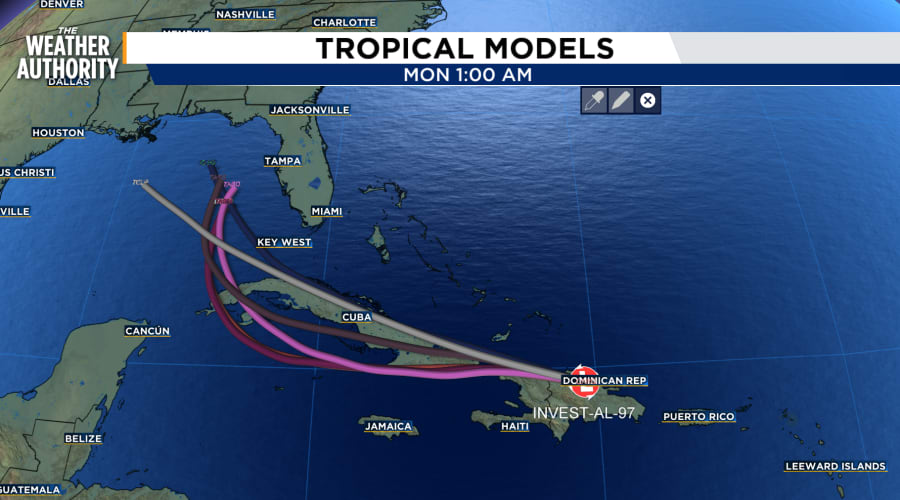JACKSONVILLE, Fla. – Gov. Ron DeSantis on Thursday issued an executive order declaring the vast majority of Florida counties under a state of emergency as a tropical wave approaches the state.
MORE: Holy cow! A col is forming in the Gulf
According to a news release, a tropical wave, now identified as “Invest 97L,” is producing a large area of disorganized showers and thunderstorms over Hispaniola, Puerto Rico and the Virgin Islands and is expected to turn into a tropical depression over the weekend over the eastern Gulf of Mexico.
The order said there is a significant threat of heavy rainfall over most of the state, with the possibility of at least 12 inches of rainfall over the next seven days.
The rainfall could result in flash flooding, river flooding, coastal flooding, erosion, and gusty winds which would put critical infrastructure like major interstates and roadways, bridges, airports, schools, hospitals and power grids at risk, according to the order.
The executive order covers 54 counties including all of Northeast Florida: Alachua, Baker, Bay, Bradford, Calhoun, Charlotte, Citrus, Clay, Collier, Columbia, Dixie, Duval, Escambia, Flagler, Franklin, Gadsden, Gilchrist, Gulf, Hamilton, Hernando, Hillsborough, Holmes, Jackson, Jefferson, Lafayette, Lake, Lee, Leon, Levy, Liberty, Madison, Manatee, Marion, Monroe, Nassau, Okaloosa, Orange, Osceola, Pasco, Pinellas, Polk, Putnam, Santa Rosa, Sarasota, Seminole, St. Johns, Sumter, Suwannee, Taylor, Union, Volusia, Wakulla, Walton, and Washington counties.

One of the key factors to watch is how the tropical wave interacts with what’s known as an “atmospheric col.” Understanding how these cols work can shed light on why certain storms, such as Hurricane Harvey, can stall and unleash devastating amounts of rain.
⛈️ In anticipation of potential heavy rainfall from Invest 97L #MakeAPlan now!
— FL Division of Emergency Management (@FLSERT) August 1, 2024
Have your disaster plan ready & your disaster supply kit stocked with AT LEAST 7 days worth of food & water for EACH member of the household.
Learn more about this hazard at https://t.co/JCGkRQ2rHG. pic.twitter.com/ehHLy72ncx



